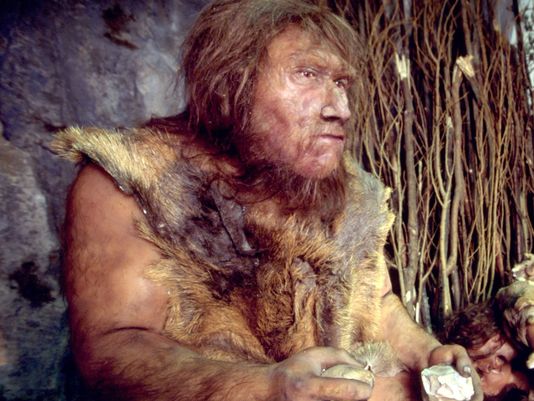When humans first wandered out of Africa more than 50,000 years ago, they soon struggled with strange and hostile surroundings, armed with little more than stone tools. Now a study suggests they got help from an unlikely source: trysts with the neighbors.
Evidence gleaned from DNA shows our species, Homo sapiens, benefitted from mixing it up with Neanderthals and another human relative, the Denisovans. Both Neanderthals and Denisovans were well ensconced in other parts of the world when modern humans arrived. By pairing off and having children with these not-quite-human creatures, modern humans quickly acquired DNA that helped them adapt to their new homes, according to a study in this week’s Current Biology.
Mixing with other species “wasn’t just some curious feature of human history,” says study co-author Joshua Akey of the University of Washington in Seattle. "(It) actually had consequences, and it helped our ancestors survive and reproduce.”
Arguably our ancestors needed all the help they could get when they plodded out of Africa, where Homo sapiens first appeared roughly 200,000 years ago. Those ill-equipped pioneers found themselves dealing with unfamiliar weather patterns and unfamiliar germs. They also came face to face with peculiar kinds of humans who were eerily similar yet different.
Left to their own devices, the immigrants would’ve eventually evolved to fit their new territory. But that process is slow. Borrowing DNA from others already well-suited to local conditions would’ve been much quicker, Akey says — “a way of short-circuiting the normal evolutionary process.”
By screening the DNA of more than 1,500 contemporary people from around the world, Akey and his colleagues identified those borrowed bits of the genetic code. One from Neanderthals, called OCA2, affects gene and skin color. Another is a fragment of Neanderthal DNA that strengthens the immune system’s response to viruses and other potentially dangerous microbes.
The researchers conducted thorough searches for outsiders’ DNA in four groups: Europeans, East Asians, South Asians and Melanesians. They estimate each group boasts 10 to 20 stretches of beneficial DNA from close human relatives. Many of those DNA stretches influence either the immune system or the coloration of body parts such as skin, the researchers found.
Previous experiments identified bits of DNA from other species that helped Homo sapiens get ahead — for example, a Denisovan gene that enhances modern Tibetans’ ability to cope with high altitudes. But the new research provides welcome confirmation of the kinds of genetic benefits that humans reaped from their relatives, Janet Kelso of Germany’s Max Planck Institute for Evolutionary Anthropology, who has collaborated with Akey on previous research, says.
The study is “a really good place to start,” says Tony Capra of Vanderbilt University. But his own work showed a link between some of the DNA we inherited from Neanderthals with higher disease risk, and he points out that even the beneficial DNA from our close kin was beneficial a long, long time ago, when our circumstances were very different.
“There’s always the good and the bad with mutations,” Akey agrees. But “given that modern humans are still around and Neanderthals aren’t, it was a good tradeoff for us.”


